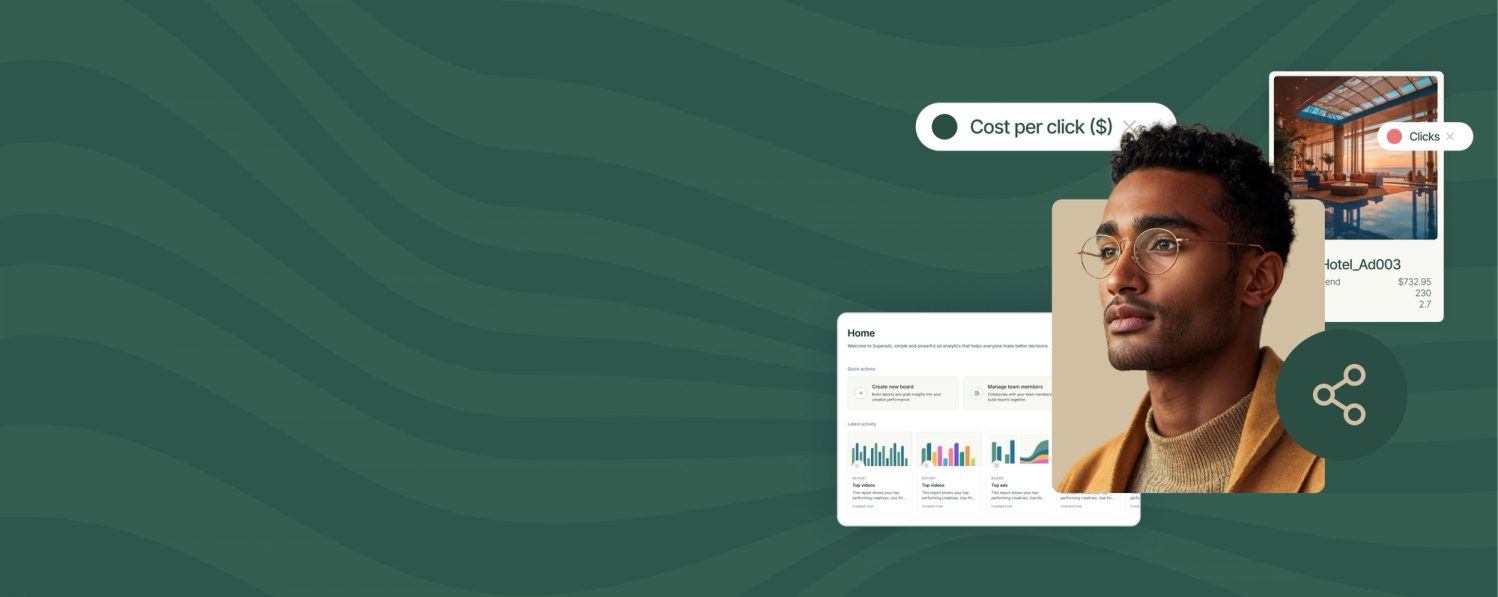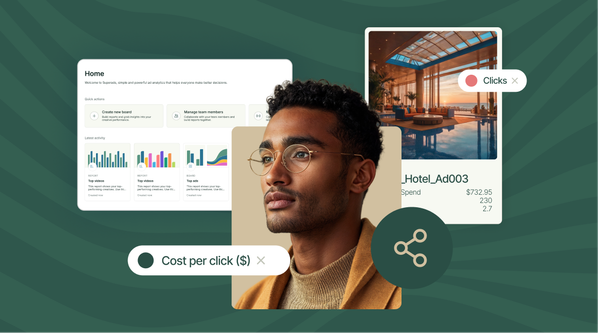
Failure doesn't mean defeat. There are several common reasons digital ads underperform. Sure, the quality of your creative matters, but so does planning and paying attention. If you take the time to look at the causes and ask the right questions—victory can be yours!
With all the work you put into launching your digital ads, failure is agonizing. But, it doesn't have to be.
Once you get past the initial sting of despair, take a deep breath and get down to the business of finding out why your ads, well… “sucked.” Consider it an opportunity to do better next time.
Stating the obvious: Water is wet, fire burns and quality is the strongest predictor of campaign success. For digital campaigns, quality is not only how good the ad looks, it’s also how well it captures attention and triggers the desired response.
However, sometimes even the slightest miscalculation has a huge impact. That’s why about 70 to 80% of users completely ignore search paid ads. As you prep yourself for your retro and regroup to try again, there are a few questions you can ask yourself to improve ad performance.
What's Quality Digital Ad Creative?
But first, let's break down the basics of what a quality ad is, what you should be measuring, and what you should ask yourself while replanning your digital marketing strategy.
Compelling digital ad creative (design) isn't just striking or highly unique; it also has to resonate or connect with the target audience to be truly effective.
In a world where paid media is exponentially increasing and won’t stop anytime soon, Digital display is projected to grow at a 15.5% compound annual growth rate (CAGR), while search ads are projected to grow at 12.2%—having quality digital ads becomes essential for your bottom line.
All-powerful marketing campaigns need to have stunning ads that also perform well. This is why measuring creative performance is vital in your digital marketing efforts, as it is your data-driven beacon to achieve digital ad goals through any channel.
For PointCard, we delivered motion & static social media ads that not only looked stunning but increased the conversion rate to 245% in two quarters. We achieved this by understanding their goals and target audiences to apply new ad concepts, maximizing traffic and clicks.
Your business can benefit from great ads, too.
Understanding Ad Performance Metrics
You might already measure most of these metrics in your digital ad campaigns. But it’s pretty easy to lose north and overlook when things are falling apart. To effectively assess the success of digital ads, let’s review each and what you should focus on:
- Click-Through Rate (CTR): The percentage of users who click on an ad after viewing it.
- Conversion Rate (CVR): While CTR often gets attention, CVR measures the percentage of visitors who take a desired action. A high CTR with a low conversion rate may indicate issues with the landing page or a mismatch in audience targeting.
- Cost Per Acquisition (CPA): This metric reflects the cost of acquiring a new customer or lead through your ad. Lower CPA means more efficient ad spending.
- Return on Ad Spend (ROAS): ROAS measures the revenue generated for every dollar spent. A higher ROAS shows that the ad is yielding significant ROI.
- Customer Lifetime Value (LTV): While it’s more of a long-term metric, LTV is crucial to understanding the true profitability of your ads.
Accurate tracking and measurement allow for data-driven decision-making, enabling you to optimize ad targeting, bidding strategies and creative elements. Without precise measurement, it’s easy to waste budget on underperforming pieces or miss opportunities to scale successful ones.
Also, focusing on just one metric can lead to misalignments. For example, sticking with CTR growth might mislead advertisers into thinking an ad is successful, even if it’s not generating sales.
Google also has its own best practices to better analyze (and optimize) metrics whenever you’re setting up campaigns with Google Ads—but you can adapt them for any other paid media platform you’re using:
- Setting up and monitoring Google Ads conversion tracking for specific devices: website, mobile or phone.
- Measure ROI/ROAS whether you’re generating leads, increasing sales or any bottom-funnel goals.
- Find the best-performing keywords using the search terms report to understand what’s working and what’s not.
- Check Google Ads’ Quality Score to improve overall performance based on the relevance with users’ search and intent (which is key to measure: 74% of consumers have made clear they prefer ads that match the content they’re searching for).
Why Do Digital Ad Campaigns Fail?
I feel like consistency is the glue that holds a campaign together. Originality is a big factor and a lack of creativity can be the kiss of death in a world where attention is a scarce commodity. And, I question the campaign's timeline. Was it a well-cooked meal or a last-minute microwave disaster?

At Superside, our very own Director of Brand and Marketing Creative, Piotr Smietana, channels his inner Sherlock Holmes to dive into the mystery of underperforming campaigns. With his magnifying glass, notepad and uncanny knack for detail, he tracks down:
- If the planning was on point
- Whether we were really listening to our audience
- Any unintended disconnects or blandness
- And, of course, the ever-important timeline.
In the clip above, Superside's Director of Brand and Marketing Creative, Piotr Smietana, talks about some of the questions he asks himself and his team when a digital campaign misses the mark.
Based on Piotr's insights, there can be a number of reasons for the most common mistakes. Look back at the beginning of your ad strategy and ask yourself these 5 questions:
Looking for a partner to optimize your campaigns with multiple data points, and AI-powered attribution models? Try SuperAds today.
5 Digital Ads Mistakes to Go From Nahh to Nailed It
Every digital advertising strategy not only needs to look good, but it also needs to perform well. Targeting the right audience, nailing the aesthetics of your ads, and ensuring they perform well is not worth much if you keep repeating some common mistakes.
1. You didn’t define your success metrics
Digital marketing’s measurability is part of what’s made it a modern mainstay. But, if you don’t set your measures of success correctly right from the start, how will you know what success really is?
It’s sort of like planning a trip without a destination in mind. You’ll always wind up somewhere, but when it comes to your ad performance, exactly where you land really matters.
You’ll have quantitative metrics, like total impressions and CPA, CTRs, etc. And you’ll have qualitative measures, like comments based on how your creative is perceived.
But your true North Star metric is the one that ties most directly to your growth model. For example, Amazon’s North Star metric is sales while HubSpot’s is signups.
Ensure you’ve identified your North Star metric, benchmark against previous digital advertising campaigns to set realistic expectations, set specific timelines for reporting and continually refine what signifies success or that it’s time to try something else.
Develop your own scoring system for your ad creative
As performance and growth marketers and their creative teams continue to refine their approaches to programmatic ad campaigns, many are adopting new methods to evaluate their strategies. One is the development of proprietary ad scoring systems.
These systems help companies assess the quality of their concepts and designs—the good, bad, or “maybe not”—even before they go live. Using what they already know, these companies are able to further maximize the ROI of each marketing effort.
2. You didn’t pay attention to your target audience
You need to suspend judgment and be curious. You need to be empathetic and always serve the customer—wondering what it is they want, they need and ultimately figure out who they are.

Humans are more than marketing personas and there’s a mix of logical and emotional reasons that affect how customers relate to your brand.
In addition to responding to what your cost-per-click or CTRs are telling you, you also need to be attuned to how they really feel about what you’re saying.
Spoiler alert: This means taking the time to interview actual prospects and customers about their brand perceptions. Your customers also have a lot to say within online communities, social media and review sites.
3. Your message just wasn’t clear
All of the elements of your ads, the visuals and the narrative, both written or interactive, have to work together to send the same message. If your ads send people to your home page or a landing page, these pages should clearly relate to and reinforce the campaign, as should any supporting email drips.
Keep an eye on simply making sense as well. Sometimes the rush to production can eat away at quality and cause even the savviest marketer to forget the end user—the audience.
Cognitive dissonance is no joke. The greater the disconnect, the more your funnel will leak like the plumbing of a turn-of-the-century building that hasn’t been maintained since the discovery of electricity. You also don’t want to be considered part of the junk ad epidemic.
4. Your ad wasn’t relevant enough
When you're thinking about performance branding or work on digital platforms, you have to think about your approach. When you're thinking about risk, the good news is everything's moving very, very fast now.
You can pretty much take any risk you need, within reason, to learn a ton about your brand and about the messaging that might work. And so the way that we approach it is to put several messages in feed and learn from what they tell us.

In the clip above, Cailen Guhl, Group Creative Director at Matterport, speaks to the race to create relevancy in increasingly competitive online spaces.
Regardless of the study you read, the trend is clear. It’s harder and harder to capture attention and even less time to do it. Not to mention, people have become even more skeptical of paid ads that well, look and feel like ads.
What’s a brand to do? No matter what you decide—speed, experimentation, variation, adaptation and optimization—are all essential.
The key to this? Creative that performs. Power and scale with the power of powerful, AI-driven ad pieces that make your business stand out from the noise. Learn more below.
Digital ad performance, whether display, social or other platforms, requires a steady stream of high-quality, always fresh creative.
It’s a non-stop circle of life from concept development and production to A/B testing and channel-specific formatting to discover what your audience actually finds interesting.
It could be UGC-style videos on social media platforms or something else entirely. But you won't know until you try, test, measure, look at what went right...and wrong (sigh)... and try again.
5. You didn’t have time to scale
Classic agencies don't have the ability to do multiple iterations or make changes where the product or team needs. Having a model, like Superside, that allowed for multiple iterations really did change the game.

A vast majority of in-house creative teams can��’t keep up with ever-increasing numbers of design requests and turnaround times that keep getting shorter and shorter.
The new reality is being strapped—having more to do than you can do on your own and doing more with less, without sacrificing speed, quality or strategy.
Looking for an extension of your in-house team that successfully transforms ads into paying customers?
Outsourcing creative isn’t optional anymore; it’s a crucial part of your DesignOps process and your best solution to scale your paid media strategy while increasing CVR.
Rather than daisy-chaining a network of limited, inefficient agencies or freelancers, Superside AI-powered design & ad services will help you concept, produce and perfect multi-channel digital ad campaigns that’ll have you talking for all the right reasons.
3 Elements that Power Digital Ad Breakthrough
A proper combination of relevance, originality and impact leads to higher rates of brand recognition—the innate recognition of your brand, such as Apple or Google for phones or Liquid Death for cutting-edge water.
Breaking through noisy, saturated channels is a cumulative battle wrought through successes and failures large and small.
The magic formula for this is pace + quality + quantity = success.
And this doesn't only work for awareness. Learn below how this formula looks in brands when done right, no matter how big or small.
How Heinz and Absolut cooked up a breakthrough
Heinz and Absolut joined forces to promote a limited-edition vodka sauce made with the famed condiment and spirit in the United Kingdom. Branded ads give a nod to Absolut’s iconic 80s print ads featuring photography by Andy Warhol, juxtaposing the bold Heinz ketchup red with the silhouette of Absolut's signature liquor bottle.
Showing that they’ve been paying attention, as celebrities like model Gigi Hadid shared her own version of the recipe on TikTok, the online campaign is further boosted by influencers sharing their reviews using #AbsolutelyHeinz.
Heinz has even employed humor with their Director of New Ventures, Caio Fontenele, quipping, “While it may have taken over 150 years of tomato expertise to launch our first Heinz pasta sauce, we’re determined to continue innovating and delighting consumers at the speed of social media trends.”
There’s also no leaky funnel in this campaign with a completely on-brand landing page that lets you preorder your own jars of sauce.
How Superside Helps Brands Avoid the Most Common Digital Ads Mistakes
Unlike Heinz and Absolute, Superside client Kins was new to the market and struggling to build awareness for its virtual physiotherapy model.
Kins' Growth Lead, Paul Worrell, wanted to experiment with humanizing the brand via its Facebook ads. Together, Superside and Kins developed a series of concepts to A/B test.
Through this series of rapid iterations, the ads featuring people enjoying athletic activities had the best performance. Those who clicked on the ads were then taken further down the funnel with personalized landing pages.
Learnings from the landing pages were then applied to targeted pages within the Kins website. Based on the successes earned, Kins went on to develop 30 more location-based landing pages. This translated into a 200% CTR boost and website conversion of more than 40% in matter of weeks.
Own Ad Platforms and Maximize Clicks with Superside’s AI-Powered Solution
In a digital marketing ecosystem where only search ads account for 40.9% of the global digital advertising market, while most consumers ignore paid ads most of the time, context, strategy and creative decide who gets the sales.
Superside can help you thrive in the ad game. With our AI-driven capabilities, you can now produce 10X and convert better with your marketing efforts in less time. With one single subscription, you get access to top-world talent that drives your ideas into converting pieces.
A strong digital marketing strategy relies on well-planned, creative ads that look good and perform well. Do it at scale with creative that performs. Book a call.






















